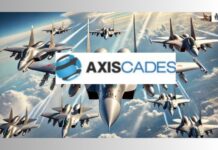Supported by Ansys, simulation technology and Ansys Apex Channel Partner CADFEM Germany GmbH
Wingcopter is developing cutting-edge drone technology to deliver vital supplies to hard-to-reach areas, including vaccines, medicine, blood/other lab samples, and medical equipment, in addition to long-rage LiDAR surveying services for infrastructure inspection. Through this collaboration, Wingcopter identified and optimized payload solutions for its drone that could increase the flight range by over 10% — delivering more resources to more people.
Designing vertical takeoff and landing (VTOL) aircraft for a smooth transition from hover to cruise requires engineering for flexible propulsion systems, aerodynamics, energy efficiency, and safety. Wingcopter relies on Ansys’ multiphysics and safety analysis solutions to validate its drone design featuring a redundant battery system and eight motors, four with tiltrotor technology for enhanced transition to cruising.
Simulation helps Wingcopter estimate drone performance across diverse conditions — strong winds, heavy rains, various altitudes, and more. The simulations are compared to field tests and operational data, and the results are fed back into the virtual environment creating a data-driven design loop that enables rapid optimization of parts for better performance and safety. Wingcopter enhanced and certified its drone design by leveraging multiple Ansys multiphysics simulation solutions:
- Ansys Discovery 3D simulation software family of products to facilitate simulation setup
- Ansys LS-DYNA structural simulation software to analyze the crash behavior of the landing gears
- Ansys Fluent fluid simulation software to understand aircraft aerodynamics and rotating propeller dynamics for seamless transition from hover to cruise
- Ansys medini analyze safety analysis software to develop the required assessments to meet safety certification standards of different international aviation authorities
“Simulation helps our teams analyze and optimize our drone design, as well as evaluate individual problems on a level of detail that is often not possible or very difficult to test,” said George Robson, team lead for mechanical engineering and aerodynamics at Wingcopter. “By leveraging Ansys’ sophisticated modeling, we can refine every aspect of drone performance, ensuring unparalleled efficiency, reliability, and innovation in aerial solutions.”
“Ansys simulation empowers customers to move beyond linear product development and embrace comprehensive design loops for more innovative and efficient solutions,” said Walt Hearn, senior vice president of worldwide sales and customer excellence at Ansys. “As the requirements for autonomous unmanned aerial vehicles grow more complex, Ansys technology can efficiently manage and adapt to these demands without compromising performance or accuracy. This ensures that our solutions remain effective and reliable, even as the scope of projects expands, helping our customers like Wingcopter continue to push the envelope.”

















